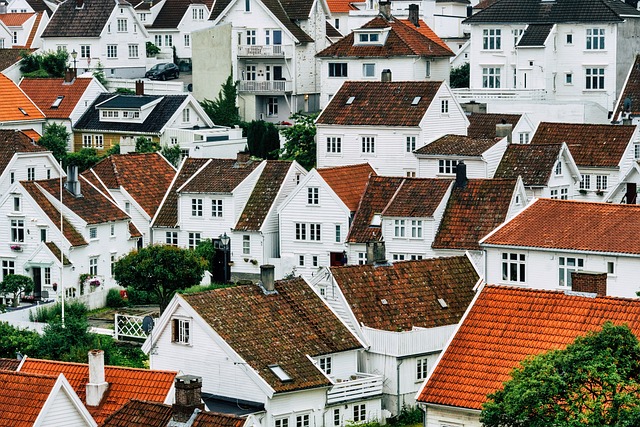Throughout history, grand estates and massive houses have symbolized wealth, power, and prestige. These magnificent structures not only showcase architectural brilliance but also reflect the cultural values and aspirations of their owners. In this article, we will explore some of the biggest houses in the world, examining their features, histories, and the reasons behind their colossal sizes.

The Largest Houses in the World
1. Antilia, Mumbai, India
Antilia, the private residence of Indian billionaire Mukesh Ambani, is often cited as the largest and most expensive private house in the world. Completed in 2010, this 27-story skyscraper stands at approximately 550 feet tall and boasts a total floor area of around 400,000 square feet.
Features:
- Multi-level Garage: Antilia has a parking space for over 160 cars.
- Luxury Amenities: The house features multiple swimming pools, a health spa, a ballroom, and a 50-seat cinema.
- Sustainability: The structure is designed to withstand earthquakes and is equipped with rainwater harvesting and other sustainable technologies.
2. Buckingham Palace, London, England
As the official residence of the British monarch, Buckingham Palace is not just a symbol of royal authority but also one of the largest residences in the world. With over 775 rooms and a total area of approximately 830,000 square feet, this palace has been a part of British history for centuries.
Features:
- State Rooms: The palace has 19 state rooms used for official functions and ceremonies.
- Gardens: The 39-acre gardens feature a lake, a tennis court, and a helicopter landing pad.
- Art and History: Buckingham Palace houses an extensive art collection, including works by Rembrandt and Vermeer.
3. Villa Leopolda, Villefranche-sur-Mer, France
This stunning estate on the French Riviera was originally built for King Leopold II of Belgium in the early 20th century. With an estimated area of 50,000 square feet, Villa Leopolda is one of the most expensive houses in the world, valued at around $750 million.
Features:
- Gardens: The property boasts 20 acres of lush gardens designed by renowned landscape architect Scott Brenner.
- Architecture: The villa features a blend of Belle Époque and modernist styles, with opulent interiors and grand rooms.
- Historic Significance: Villa Leopolda has hosted numerous high-profile events and has been featured in films.
4. Windsor Castle, Berkshire, England
Windsor Castle is the oldest and largest inhabited castle in the world, serving as a residence for the British royal family. Spanning approximately 13 acres and featuring more than 1,000 rooms, it is both a fortress and a home.
Features:
- State Apartments: The State Apartments are richly decorated and include fine art and historic furnishings.
- St. George’s Chapel: A notable Gothic chapel within the grounds, it is the site of many royal ceremonies.
- Historical Significance: The castle has been a royal residence for over 1,000 years, making it a vital part of British history.
5. The One, Bel Air, California, USA
The One, located in the affluent Bel Air neighborhood of Los Angeles, is a modern mansion that has garnered attention for its sheer size and luxurious features. With an estimated area of 105,000 square feet, it is one of the largest private homes in the United States.
Features:
- Multiple Bedrooms: The mansion boasts 21 bedrooms and 42 bathrooms.
- Amenities: The One includes a nightclub, multiple swimming pools, a bowling alley, and a spa.
- Design: The contemporary architectural style incorporates elements of modern luxury and sustainability.
Reasons Behind Their Size
The size of these houses can be attributed to various factors:
1. Status and Wealth
For many owners, particularly billionaires and royalty, large houses are a status symbol. The sheer size and opulence serve as a display of wealth, power, and influence.
2. Cultural Significance
In some cultures, large homes are associated with family lineage and heritage. For instance, in many aristocratic families, sprawling estates are passed down through generations, serving as a symbol of their historical importance.
3. Functional Needs
Many of these large homes serve multiple functions. They may host large gatherings, serve as venues for public events, or house extensive staff. The layout often includes separate living quarters for staff and guests, entertainment spaces, and facilities for various leisure activities.
4. Architectural Trends
The design of large houses can also be a reflection of architectural trends and innovations. As building technologies have advanced, it has become possible to construct larger and more intricate structures that were previously unimaginable.
The Impact of Large Houses on Society
1. Economic Impact
Large houses can have significant economic implications, contributing to local economies through tourism, as many of these estates are open to the public for tours. Additionally, they often lead to increased property values in their surrounding areas.
2. Environmental Concerns
The construction and maintenance of large homes can raise environmental concerns, including resource consumption and land use. Many large estates require extensive landscaping, which can impact local ecosystems. However, some modern constructions are focusing on sustainable practices to mitigate these effects.
3. Cultural Influence
These homes often become cultural landmarks, attracting attention for their architecture, history, and association with famous individuals. They may inspire future generations of architects and designers, contributing to the ongoing evolution of architectural styles.
Conclusion
The world’s largest houses are not merely homes; they are architectural marvels that embody wealth, history, and culture. From the grandeur of Buckingham Palace to the modernity of The One, these residences offer a glimpse into the lives of their owners and the societies they inhabit. Understanding the significance of these structures enhances our appreciation for architectural achievements and the social dynamics they represent. As we look to the future, it will be interesting to see how the concept of large homes evolves in response to changing societal values and environmental concerns.